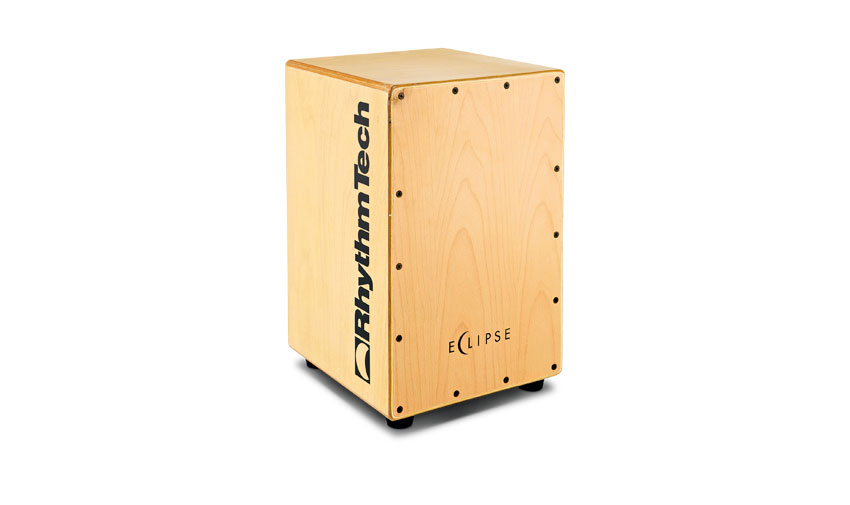MusicRadar Verdict
The sound is quite impressive (especially considering its reduced dimensions), but any potential purchaser should consider the additional cost of a protective case.
Pros
- +
Decent bottom end. Tuneable.
Cons
- -
There are better value options out there.
MusicRadar's got your back
For over 30 years, US Company Rhythm Tech has been providing us with a range of truly innovative percussion and drum-related accessories, here we look at a new cajon, dubbed the Eclipse.
The very first design, leading to Rhythm Tech's formation, was the lightweight, crescent-shaped tambourine. This still proves popular with many a vocalist and percussion player today. The unique shape of this tambourine provided the inspiration for the Rhythm Tech logo.
Build
Under Rhythm Tech's Eclipse brand comes this classically-styled cajon which is sized slightly smaller than some we have played. Like those other models, the Eclipse features a rectangular-shaped box, constructed from sheets of plywood.
To the front is a slightly thinner slice for the Tapa, or frontplate. This is held in position by 14 Phillips screws around its outer edge - adjusting the tension of the screws, say Rhythm Tech, will allow the cajon to be "tuneable", although we have our reservations as to whether this will be effective.
Located to the rear is a 12cm sound hole, which should help achieve a decent lower-end response. By adding minute grit particles (or similar material), at the varnishing stage, the top has been made slightly 'roughened' to help provide a non-slip sitting surface.
Reinforcement is provided internally by lengths of solid wood braces at each ply joint. The snare sound is created by three sets of strainer ends, approximately 12cm long. These are fixed at an angle by a shaped piece of hardwood which is tacked onto two of the reinforcing uprights.
Hands On
"There's an unexpectedly meaty bottom-end thud"
When striking with the palms, we find we don't have to lean too far down the Tapa before we hear an unexpectedly meaty bottom-end thud. Not quite bass drum territory but nevertheless impressive with its deep resonating sound.
Want all the hottest music and gear news, reviews, deals, features and more, direct to your inbox? Sign up here.
By slicing with the finger tips at the very top, there is no evidence of the snare-effect wires - just what is required to give a nice bongo-ish slapping sound. Moving slightly lower down brings those snares into play, creating a pleasing crunch to aid a convincing drum-like sound.
It's time to see if this cajon is capable of being tuned, or at least the pitch altered. Out comes the Phillips screwdriver (not supplied) - after some minute twists of one or two of the screws, there is a noticeable effect.
Though it does affect the pitch, it is not quite as drastic or dramatic as on a drum - but it is significant enough for us to eat our words! To demonstrate the effectiveness of the sound hole, we slightly cover it over with our palm, temporarily stopping the cajon from resonating, reducing the volume and bottom-end significantly.
